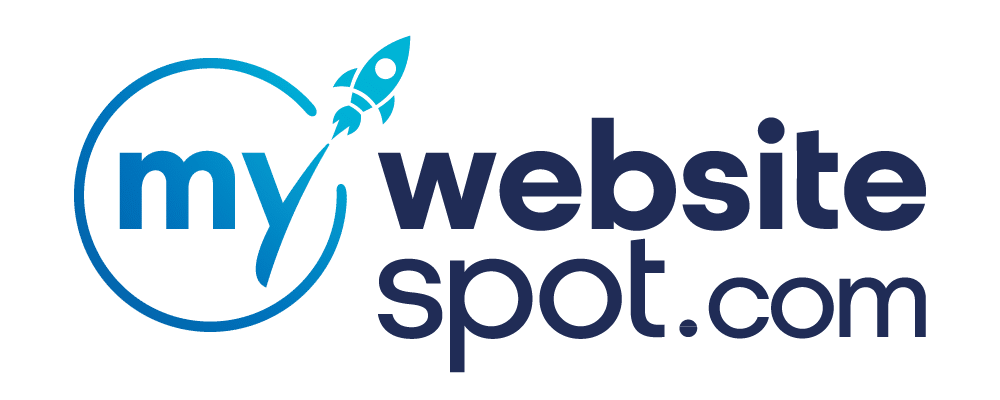As a website owner, you’re probably no stranger to the question that plagues every SEO consultant:
“How long until my website ranks on top of Google?”
While a simple answer is tempting, the reality is far more nuanced.
Your website’s journey to the coveted first page of Google’s search results depends on many factors, including website strength, competition, budget, skills, and more.
In this article, we’ll dive into the intricacies of Google ranking and provide valuable insights for new and seasoned website owners who want to boost their organic search traffic.
The elusive timeline of Google ranking
Let’s start by addressing the elephant in the room: how long does it really take to rank on Google?
As you might have guessed, the common answer is ‘It depends.’
To shed light on this matter, we’ll examine data from reputable sources like Ahrefs and Semrush, giving you a clearer picture of the timeline you can expect.
Ahrefs data reveals the average timeline and search volume
Ahrefs, a prominent SEO tool, conducted a comprehensive study in 2017 by analyzing two million random keywords and their Top 10 ranking pages.
- They found that the average Top 10 ranking page is more than two years old.
- Pages that clinch the number one spot are nearly three years old on average.
- Only 22% of pages currently in the Top 10 were created within one year.
Digging deeper, Ahrefs found that only 5.7% of all studied pages achieved Top 10 rankings within the first year. These “lucky” pages took approximately 61-182 days to get there.
However, this data only pertains to the fortunate 5.7% of pages. For the vast majority (around 95%) of pages, Top 10 rankings within a year remain elusive.
Ahrefs further examined the influence of monthly search volume on ranking timelines.
- 0.3% of pages ranked in the Top 10 for high-volume keywords in less than a year.
- low-volume keywords allowed for quicker Top 10 placement, often within a few months.
Nonetheless, it’s crucial to remember that this data is still limited to the 5.7% of pages that succeeded within a year.
In summary, Ahrefs’ research underscores that, while there are exceptions, the majority of newly published pages do not reach the Top 10 within a year. Those that do typically take between 2-6 months.

Semrush's 2021 Study Adds Perspective
Semrush’s 2021 study analyzed over 28,000 new websites to gain insights into their ranking journeys.
The results reinforce the notion that ranking on Google is a formidable challenge. Only 7.65% of these domains had content ranking in the top 100 search results consistently for 13 months. More than 92% of websites struggled to maintain such rankings.
The study revealed several key factors:
- Backlinks are crucial: Nearly all (92.3%) of domains ranking consistently in the top 100 had at least one backlink.
- Persistence pays off: By the sixth month, only 19% of domains began ranking in the top 10 and maintained those positions.
- Long-tail keywords matter: Websites in the top 10% of performers targeted keywords with an average length of 3.2 to 3.5 words.
- Content length makes a difference: Longer content, with an average word count of 846 words, outperformed shorter content.
- Domain authority and search volume correlate: Top-performing domains had higher domain authority and ranked for keywords with greater search volume.
Each of these studies concluded that a multitude of factors influence Google rankings. These factors range from the website’s overall strength and authority, the quality and quantity of backlinks, the regularity of fresh content updates, to keyword strategies and content depth.
7 Strategies to Enhance and Sustain Your Google Ranking
1. Consider Your Website Strength
When ranking on Google, one of the fundamental factors to remember is your website’s strength and authority. Google tends to favor larger and more authoritative websites over smaller ones.
To improve your site, you can start by building your website’s authority.
Google’s E-E-A-T policy, which stands for Experience, Expertise, Authoritativeness, and Trustworthiness, plays a significant role in determining a website’s ranking on Google. This policy emphasizes the importance of providing high-quality, trustworthy content created by experienced experts sharing information about the website and its creators.
Websites adhering to these principles are more likely to rank well on Google and build long-term credibility with users and the search engine.
2. Don't Give Up on Link Building
While it may take some time to see significant results, it’s important not to give up on your link-building efforts. The momentum you build during the slower months will eventually pay off, leading to improved rankings.
Remember, internal linking is as important as external links. Links from one page to another on your site help direct users through your site and allow Google to understand what your site is about. The flow of information internal linking creates opportunities for Google to link your site across different search queries.
While social sharing has a role in promoting your content, direct link-building from influential websites or individuals is a more reliable and effective way to quickly build links.

Identify high-quality, authoritative websites in your industry or niche and contact them for collaboration or guest posting opportunities. Building relationships with other website owners and influencers can lead to valuable backlinks.
Building direct relationships with influencers or industry experts can lead to valuable backlinks and endorsements. Consider offering to provide guest posts or expert insights on their platforms in exchange for backlinks to your site.
Participate in relevant forums, communities, or industry-specific groups where you can share your expertise and content.
By actively engaging in discussions and offering valuable insights, you can naturally attract backlinks from other community members who find your contributions valuable. Remember that the key to successful direct link building is building genuine relationships and offering valuable content that others want to link to.
Remember that the quality of backlinks matters more than quantity, so focus on acquiring links from reputable sources and internally linking your pages to and from related content. Over time, your persistence and dedication to link building will contribute to improved rankings on Google.
3. The Optimal Link Building Window
The sweet spot for building links to your content is approximately 1.8 months after publishing. During this period of maximum freshness, Google is more likely to prioritize indexing and ranking your content higher.
- Create a content publishing schedule that aligns with this optimal window.
- Plan your content releases to coincide with the most favorable times (day of the week and time of day) for link building.
- Ensure you have high-quality, well-researched content ready for publication during this period to attract backlinks more effectively.
Stay vigilant and monitor your content’s performance closely. As you approach the 1.8-month mark, be proactive in reaching out to potential link-building opportunities.
Identify influencers, websites, and communities interested in your content, and initiate reach out to them. You can email your existing customers with new or revised content links.
By timing your link-building efforts strategically, you can capitalize on the algorithm’s preference for fresh content and improve your chances of ranking faster and higher on Google’s search results.
4. Leverage Fresh Content
Google’s search algorithm values freshness, and websites that regularly publish new, relevant content often receive preferential treatment in search results.
To harness the power of fresh content for SEO, consider implementing a content strategy that includes regular updates and additions. Start by conducting keyword research to identify trending topics and relevant keywords in your niche.
Create content that addresses these keywords and provides unique insights, solutions, or perspectives. You can accelerate your ranking journey by consistently delivering new and updated content.
Leverage user-generated content and community engagement to keep your website’s content fresh. Encourage user reviews, comments, and discussions about your products or services.
Remember to revisit and update your existing content as well. Conduct periodic content audits to identify and refresh outdated information with the latest insights or data.
By actively managing and refreshing your website’s content, you can align with Google’s preference for freshness and improve your chances of ranking faster and higher in search results.
5. Keyword Strategy
Conduct thorough keyword research to identify terms that align with your content and resonate with your target audience. Use keyword research tools like Google Keyword Planner, SEMrush, or Ahrefs to discover high-potential keywords.
Focus on keywords where you have a competitive edge regarding domain rating (DR). This means choosing keywords for which your website’s authority and backlink profile make it more likely to rank.
Look for keywords with a reasonable search volume and lower competition to increase your chances of ranking higher in search results.
Consider targeting long-tail keywords, which are specific, longer keyword phrases that often have lower difficulty scores. These keywords can be easier to rank for and attract more qualified traffic to your site.

Optimize your on-page SEO for the selected keywords. Your target keywords need to be strategically placed in your content, including
- titles,
- headings,
- meta descriptions,
- and throughout the body of your text.
While it’s tempting to use keywords extensively through your content, DON’T.
Google flags these sites for keyword cannibalization – stuffing keywords onto pages without broader context. Create high-quality, informative, and valuable content that aligns with your chosen keywords.
6. Keyword Length
Targeting long-tail keywords, typically three words or more, is a strategic approach to improve your website’s search engine rankings.
Long-tail keywords often have lower difficulty scores and are easier to rank for, making them an actionable way to enhance your SEO efforts. To implement this strategy effectively, conduct keyword research to identify long-tail keywords relevant to your niche or industry.
Use keyword research tools to discover these longer, more specific keyword phrases that align with your content and user intent. Once identified, incorporate long-tail keywords naturally into your content, including headings, subheadings, and body text.
Create content that directly addresses user queries and needs related to long-tail keywords.
Long-tail keywords often reflect specific search intentions, such as questions, informational queries, or product-specific searches.
Monitor the performance of your long-tail keyword-targeted content and make adjustments as needed.
7. Long-Form Content
Long-form content typically consists of articles or blog posts that are more extensive and in-depth than shorter pieces. Identify key topics or subjects relevant to your industry or niche and create comprehensive, authoritative content around them.
Long-form content often ranks well for multiple keywords and can establish your website as a go-to resource in your field.
Prioritize quality over quantity when developing long-form content. Ensure that it provides valuable insights, addresses user queries, and offers unique perspectives or solutions to common problems.
Structure your long-form content effectively.
- Use clear headings, subheadings, bullet points, and visuals to break up the text and make it more reader-friendly.
- Consider incorporating multimedia elements such as images, videos, infographics, and charts to enhance the overall user experience.
- Remember to regularly update and refresh your long-form content to ensure its relevance and accuracy over time.
Long-form content that engages and educates your audience is more likely to attract organic backlinks from other websites, further boosting your SEO efforts.
It’s a marathon, not a sprint
In conclusion, the question of how long it takes to rank on Google lacks a one-size-fits-all answer. It depends on numerous variables. It will not happen overnight.
A multi-layered approach to SEO, encompassing website strength, content quality, backlinking, and keyword strategy, is essential.
Recognize that the journey to Google’s first page is a marathon, not a sprint. As you build your website’s authority and create valuable content, you’ll gradually ascend the rankings and reap the rewards of increased organic search traffic.
Contact My Website Spot today if you’re ready to supercharge your SEO efforts and accelerate your ranking journey.
Our experienced team has successfully navigated the Google landscape for over 18 years and can guide you toward greater search traffic and online success. Don’t wait—start your journey to Google’s first page now!

